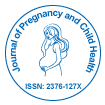Smoking in Pregnancy: The Risks, Effects, and Solutions
Received Date: Nov 01, 2024 / Accepted Date: Nov 30, 2024 / Published Date: Nov 30, 2024
Abstract
Smoking during pregnancy remains a significant public health issue, with far-reaching consequences for both maternal and fetal health. The use of tobacco during pregnancy exposes the developing fetus to harmful chemicals, such as nicotine, carbon monoxide, and tar, which can disrupt critical stages of fetal development. These substances negatively impact the placental function, leading to reduced oxygen and nutrient supply, and significantly increase the risk of pregnancy complications. Maternal smoking is associated with a higher incidence of preterm birth, low birth weight, stillbirth, and developmental delays. Furthermore, exposure to tobacco smoke can lead to long-term health problems for the child, including respiratory issues, developmental delays, and a higher risk of chronic diseases. The mechanisms through which smoking affects pregnancy are multifaceted, involving both direct and indirect effects on maternal health and fetal development. While smoking cessation is highly beneficial at any stage of pregnancy, many women face challenges due to addiction, social influences, and psychological factors. Effective interventions, such as counseling, nicotine replacement therapies, and targeted healthcare support, can improve smoking cessation rates and mitigate risks to both mother and child. This paper aims to explore the risks and effects of smoking during pregnancy, emphasizing the importance of prevention and cessation programs, and offering evidence-based solutions to reduce the prevalence of smoking among pregnant women. Public health initiatives and healthcare providers must continue to advocate for smoking cessation, providing comprehensive support to expectant mothers and fostering a healthier start for future generations.
Citation: Ramya K (2024) Smoking in Pregnancy: The Risks, Effects, and Solutions. J Preg Child Health 11: 673.
Copyright: © 2024 Ramya K. This is an open-access article distributed under the terms of the Creative Commons Attribution License, which permits unrestricted use, distribution, and reproduction in any medium, provided the original author and source are credited.
Share This Article
Recommended Journals
Open Access Journals
Article Usage
- Total views: 107
- [From(publication date): 0-0 - Feb 22, 2025]
- Breakdown by view type
- HTML page views: 81
- PDF downloads: 26
